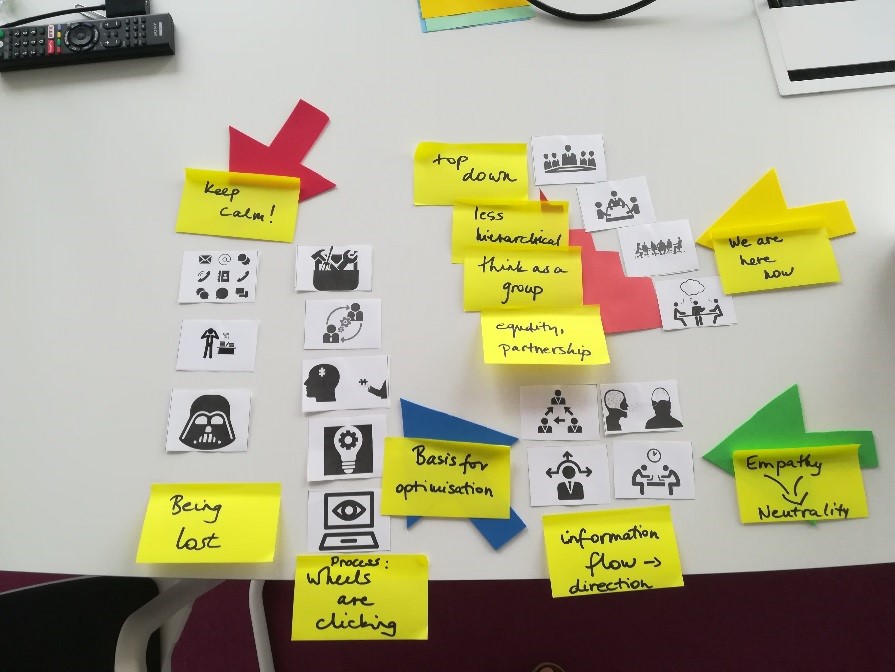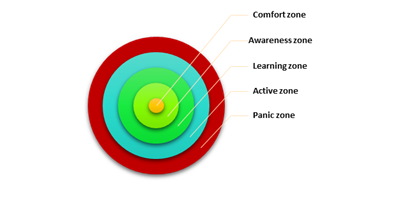- Home
- Various Articles - General
- Empowering the Language Learner Through Language Coaching in a Workplace Environment
Empowering the Language Learner Through Language Coaching in a Workplace Environment
Australian-born Gabriella Kovács ACC is an internationally certified language coach, business communication trainer, language teacher (B.Ed., M.A.), mentor and teacher trainer. Her mission is to add dimension to ongoing language learning practices and call attention to a more holistic, person-centred approach for language teachers. She has been providing trainings and workshops for teachers in Hungary and internationally. She supports the work of various organisations, besides working with her private and corporate clients on various projects. She is a contributor to Iatefl Hungary and BESIG events. She is co-founder of ILCA, the International Language Coaching Association, supporting language professionals globally.
Email: internationallangcoach@gmail.com, https://internationallanguagecoaching.com/
Outline
In this article I will be presenting what language coaching is and how it can support a specific target group of language learners. A general overview of issues language coaching focuses on will be provided for language teachers.
What is language coaching?
Definitely not the new fad come to replace language teaching... it is a methodology for personal or professional development for language-related issues. Application of either pure language coaching or a language coaching approach in teaching or training is not replacing but complementing language teaching, providing an additional perspective.
In brief, it is a balanced partnership in dialogue serving the language learning and practical target language communication needs and goals of the client; with a slightly longer definition:
Language coaching is a learner-led process aimed at creating optimal target language acquisition while working towards effective international communication skills in order to reach future-related goals.
The framework is based on strategies utilising intrinsic motivation and developing awareness, where the coaching practice develops and refines learning skills. Both parties (coach and coachee) share responsibility for the process and its success equally, with coachees taking ownership for their own learning and development.
As a result of the process the coachee will learn to gain control of their language learning and target language communication processes for general or workplace purposes.
It is the responsibility taken on by individual clients committed to language development. It is a target- and result-oriented mode of work. Focused, objective, non-judgemental communication with the client is key to increase levels of awareness to reach independence, autonomy for the language learner.
Ideally it can be made use of at the onset of any language learning process, building it into the assessment, the approach is particularly useful with learners aged 16 and above. In this article the typical language learner will be someone working in a business environment needing the target language to use primarily at work and work-related situations.
Process of language coaching
Emphasis is on the language the language coach uses, the questions asked, the feedback given, and how to remain present in the conversation, taking a holistic view of the learner: all being very exciting areas for language teachers. When working with teachers in workshops and trainings, the feedback received is that learning the active listening and questioning techniques coaching requires is a high mountain to climb. From the other perspective, something language learners in a coaching process regularly mention in their feedback: no-one has ever asked me these questions, I had never really thought about this before, it is an eye-opener, etc. - you get the picture. An integral part of training teachers is that teachers learn to understand the perspective of the learner. One teacher commented that being coached was like „having a look inside of me, the hidden language learner, which hasn’t happened to me.”
After a few language coaching sessions blockages, obstacles might be discovered which the client had not been aware of previously, but as they surface the client will reach a point where they are capable of making decisions on their own, which will lead them on to becoming conscious and aware language learners, which is a key step – without understanding your true painpoints you cannot move forward and take action.
The language coaching sessions themselves may be held in the target language at language levels where language learners feel they can express themselves well enough to articulate their thoughts to the coach without additional stress.

Who is this for, who is this targeting?
Language learners, users
- professionally and personality-wise competent and able, yet lacking language usage competences;
- working daily using avoidance strategies, eventhough this is detrimental to professional/personal development and progress;
- feeling they are not given enough responsibility by superiors due to language and communication issues;
- unable to reach the next language-user plateau;
- uncertain concerning language learning goals and are in search of a language learning map;
- who have tried a number of language courses and wish to develop with something new;
- feeling demotivated and stressed or insecure to continue their language studies.
If your language learners have ever had just one of the following thoughts preceding a foreign language-related challenge (presentation, business trip, small talk, holiday, shopping), they might consider giving language coaching a try:
„I don’t really know how to go through with this. I don’t know English well enough. I have tried so many times and I have had no success. Others would be more competent. Everyone is better than me in English at my workplace. I will never learn English.”
These thoughts are damaging. On the one hand, because they are merely thoughts but often we handle them as if they were facts. You may feel you are carrying a burden on your shoulder. It is worth taking a look and checking which way to go. A language coach can guarantee the path leading from indecision to self-assurance.
Is language coaching for the unsuccessful then? Of course not, it is for those who feel uncertain, who are not so clear about what to expect and how to go about their learning. Perhaps they would simply like a different approach to learning a language. For learners of a language who are comfortable and make progress with language teachers, language coaching may be useful at the onset of a learning process to increase efficiency and at the end of a learning processs to sum up and reflect on the learning experience - but this is not needed in every such case.
Language teachers, trainers:
Language coaching from the language professional’s side is also for a specific sort of teacher, trainer. Professionals who feel that the processes theyv have grown accustomed to are no longer providing the support and help they have in the past: neither for the professionals, nor for the learners. It is now essential to embrace change and deal with the challenges, complexities and explore unknown terrain and utilise them in the classroom, training room. If this is how you think, learning more about language coaching is an option. Teachers who have acquired the basic coaching skills feel their learners have been liberated and given additional space to create their own thinking about learning a language, explore ideas at a metacognitive level, something there is very little time for in class.
What is the background of LC?
Language coaching works with a variety of approaches, frameworks and techniques, tools and activities in alignment with general coaching standards. These would include (among others):
- working with a positive standpoint (not analysing mistakes, failures and painpoints)
- using active listening techniques, direct communication, questioning techniques
- focusing on motivation, needs and expectations
- increasing understanding of communication strategies, styles
- addressing goal-setting issues, procrastination, time-management
- assembling a personal success plan etc.
As language professionals being familiar with these ideas can add to the context of LC: Bloom’s taxonomy, Maslow’s hierarchy, Kolb’s learning process, Knowles’ adult learning theory, Zoltán Dörnyei’s extensive work, Sarah Mercer’s writings – once again, to name a few.
Your learners knowing what learning preferences work best for them can boost productivity, motivation and decrease time and frustration, so taking the time to discuss these, whether using a template, a test or just addressing the issues that contribute to these preferences (time to learn, tools used, people to support them etc.) will be time well spent.
It is necessary to clarify: a language coach will be supporting the learning, the acquisition of the language and help the learner understand how they can increase their efficiency and understanding of the learning process for them specifically, supporting learning processes at a deeper level.
Out-of-the-box thinking will trigger unthought of solutions and a mindset shift for clients finding it difficult to find firm ground under their feet in the target language. After all - particularly in a corporate environment - clients have grown accustomed to coaching that supports their goals in a business context, therefore the process itself will be familiar. This sort of activity below zeroes in on creativity and fun, yet addresses complex notions concerning the communication taking place in workplaces. Take a look, it is a visual interpretation of one manager’s communication with the help of icons, post-its and arrows. I definitely couldn’t have come up with these ideas. The activity enriched an ongoing discussion we were having about what aspects of the manager’s communication needed attention.

The positive mindset of the coach (believing the client can reach their goal) will result in the client taking steps in the direction of learner independence. That is the utmost goal of any coaching process: for the client to be able to make decisions and resolve issues concerning their challenges and move on – without any further help from the coach. In this aspect it is unlike teaching, where there are teachers working with students for years, which is fine. Coaching processes tend to be much shorter (depending on the complexity of the issue at hand), approx. 3-8 sessions), maybe occasional sessions e.g. once a month; it is totally up to what the coach and client agree on. It is the responsibility of the coach to hold the client accountable to their goals and the client’s responsibility to do everything they possibly can to reach them. This may be drawn up in a contract, but an agreement is definitely made prior to starting the process, laying the foundations to a mutually accepted plan each party will need to stick to.
Supportive strategies
It is necessary to understand reasons for learners not making progress with the language learning, to reduce stress levels and anxiety when using the target language and be more at ease with themselves in these situations, to communicate better, to increase learning awareness and clarify how to reach realistic goals that support progress best. Control and decision-making will lie in the hands of the language learner, after all, the language learner has all the previous learning experience, the plans and goals, so working with a coaching mindset in classes can guide the way by building a positive space for growth and reflection. This may happen in a matter of days, weeks or months, depending on the individual client and the weight of various factors in the process.
If language learners have a choice and learn to make their own decisions, they can regain ownership of their learning and become autonomous learners. Active involvement of the client in the coaching process or a teaching process working with a coaching approach releases them of the „you are the teacher, tell me what to do” attitude which is restrictive and demotivating, to say the least. We are talking about competent adults who are perfectly capable of thinking for themselves in a variety of contexts – so why not concerning their own (language) learning?
A language coaching process may seem slow at first but will actually increase the language acquisition simply because the client understands better what is missing, what needs to be done and will have a can-do attitude in a supportive, safe environment to take the first steps needed on the journey.

Communicating effectively in a language other than your mother tongue is a bit like driving a car without a map or GPS, and you don’t know the exact address of your destination either... Language coaching may open new perspectives to language learners and teachers alike, as it is not about passing on knowledge, rather, it is about the re-organisation of and stronger awareness in relation to existing resources and motivational elements through discussion, building on the engagement and involvement of the learner. As a language coach, you will be working with strengths and not identifying mistakes, providing feedback to encourage thoughtful reflection and progress and not systematically analysing the learner output. A focused content interest will override linguistic analysis all through the coaching process.
A few examples from LC clients of mine whom I have supported with their initial challenges:
„When I am in a conversation with my boss, I actually think he has no idea what I am talking about. Is it because of my English?”
„I do not want to work on my professional English yet, I think I need to improve my vocabulary and grammar first.”
„When I am training people I am more confident, because I can move around, there is more interaction. When presenting, I am more space-conscious and I find it difficult to connect with the audience too. What should I say?”
For any ESP teacher, BE teacher or trainer these are familiar scenarios to deal with on a daily basis. Reframing these issues is crucial. Are these really about language levels? Is it about moving from CEFR B1+ to B2? Is it about monitoring and charting errors? Hardly. In my experience the ratio of language level-related issues and other, coachable issues is 20:80. It is more realistic to move from grammar/vocabulary/guided practice and make use of the resources of the language learner and begin to understand reasons, intrinsic motivation and the environment they are in, interpreting feedback they receive (e.g. at workplace) about their language performance, options they might choose and creating a positive outlook for their language learning and language usage.
Hand over the spoon – don’t spoonfeed learners, especially not adults. Instead, engage in thought-provoking, inspiring conversations, discussions. Let your learners step into the space you create for them to shine. There is nothing more rewarding than seeing a learner realise some hometruths about themselves as learners, language users. Do not miss this opportunity and when you want to tell or instruct your learner next time: just stop yourself and ask instead.
Results
The methodology of coaching has yielded profits for a number of clients particularly because they will make decisions with more confidence and make progress. As a language professional you can identify measurable development, though not with grades and percentages.
Clients will gain focus, assurance, confidence and willingness to pick up that phone, give that talk, order that meal, whatever... because what was missing for that has been understood so they now have the courage to take on challenges. Moving from comfort or panic zones to the active zone (cf. below) is the shift to aim at. Often we believe there is nothing between the comfort and panic zones – but do believe there is!
Depending on the earlier learning or language usage history of the learner, a coach may have language learners unable to manage low self-esteem after a number of negative experiences, or clients having ready excuses for not taking the plunge – all typical issues a competent language coach will handle.

Based on a number of surveys and interviews with heads of L&D, HR, recruiters, headhunters across industries at a global level, one thing is mentioned – across industries: language knowledge is one of the weakest competences. When the stakes are high and employees (at any level) need to communicate to convince, sell, negotiate, clarify... it takes guts in a language you do not feel at home in.
If we look at the ROI (return on interest) for companies or families: adding on yet another language course with a revision and units of fun may just take time from work and seem like a solution – short-term, but as we know, quick fixes are like adhesive wallpaper that sticks for a few weeks then peels off... Costs increase, results might not be as expected. With language coaching, your clients will understand what exactly they need to learn, how to reach their goals, when and who with and how often that learning will take place. It will take place not only in training/learning environments but in the worklplace, and other areas of life too. It is good to keep in mind the ripple effect: coaching increases awareness not only about learning a language: any coaching will have a tangible impact on communication in general, on clients and their environment/relations in and outside the workplace also.
It is possible to empower language learners and increase their confidence in themselves, to overcome the inhibitions, reframe their reactions to the (inner) critic whose voice they have been listening to. The work of coach and client is a collaboration with the language learner’s goals in focus. It is possible to turn around „I know I need to learn and improve, but don’t know how, and, quite frankly, I don’t really want to...” and find motivation and strength to design a platform for growth and development, where a language learning problem becomes a language learning task. Clients’ relationship with language learning will change, experiencing deeper, more comprehensive language learning. When the pieces of the puzzle are in place, the whole picture becomes clearer.

Language teachers, trainers can add a dimension to their professional toolbox by using a language coaching approach in their classes, trainings: knowing when and how to transition between roles is a skill that can be acquired.
References/ Photos
unsplash.com
Please check the NLP and Coaching for the English Classroom course at Pilgrims website.
Please check the Advanced NLP and Coaching for the English Classroom course at Pilgrims website.
Rethinking Language Teacher Training and Professional Development
Maria Heron, UK; Alan Maley, UK;Rod Bolitho, UKELT Today: Action, Motivation, Effectiveness
Mariya Neykova, BulgariaEmpowering the Language Learner Through Language Coaching in a Workplace Environment
Gabriella Kovács, HungaryOrganic Learning And Its Place In The ESL Classroom
Mark J Stoneburgh, Canada;Anthony Page, UKFears and Worries of Future CLIL Teachers: Methodology Course Design
Ian Michael Robinson, Italy